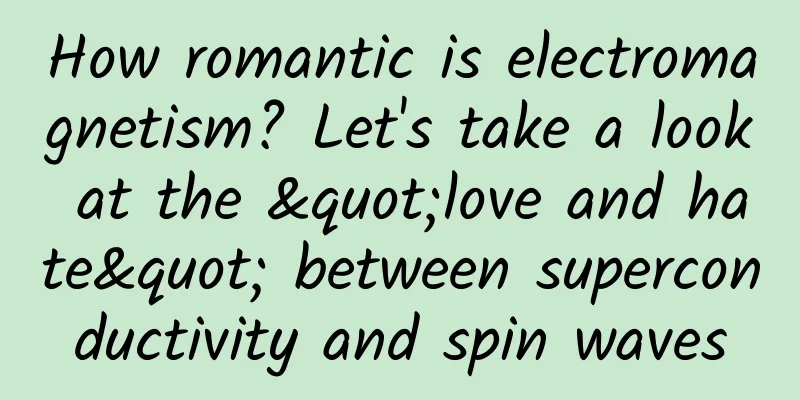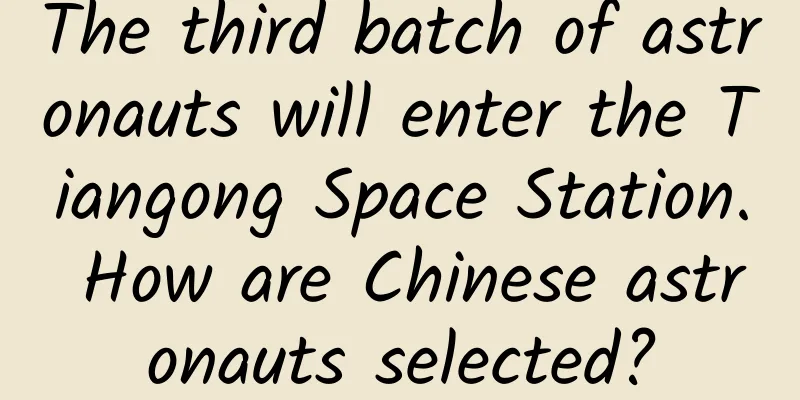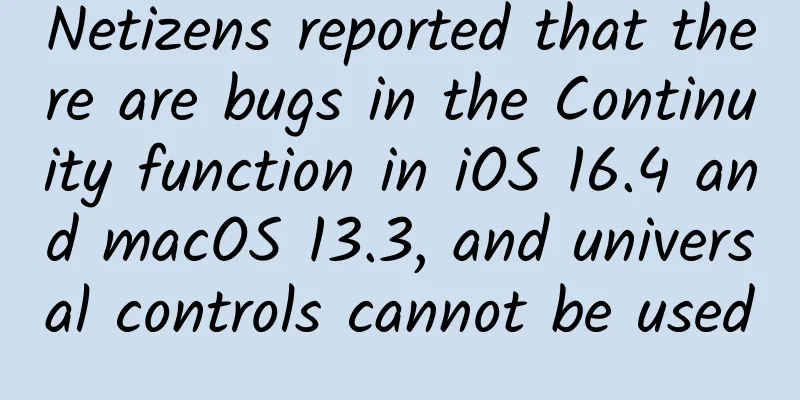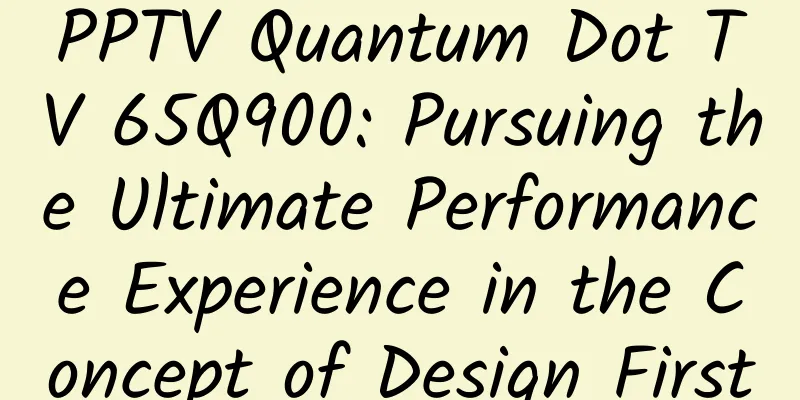How romantic is electromagnetism? Let's take a look at the "love and hate" between superconductivity and spin waves

|
Author: Luo Huiqian Institute of Physics, Chinese Academy of Sciences In solid materials, there are two electromagnetic phenomena that always have a narrow road to each other, that is, superconductivity and ferromagnetism. However, recently some scientists claim to have brought them together and made them interact. What is going on? What important uses will they have in the future? Today, let's talk about the love-hate relationship between superconductivity and spin waves. Speaking of superconductivity, you can simply understand it as "super conductivity". That is to say, some materials have very strong conductivity under a certain temperature, so strong that the resistance completely disappears and becomes zero. Superconductors not only have absolute zero resistance, but also have complete anti-magnetism. In other words, its response to the external magnetic field is negative, and it is completely negative. Once it completely enters the superconducting state, all external magnetic fields are expelled from the body, and the anti-magnetic volume reaches 100%. The anti-magnetism of superconductors is the most powerful anti-magnetism. You can see the difference by comparing it with other anti-magnetic materials in nature. For example, pyrolytic graphite has an anti-magnetic volume of only 0.04%. The water commonly seen in our lives is also anti-magnetic, but the anti-magnetic volume is only a pitiful 0.001%, which is one hundred thousandth. Complete diamagnetism of superconductors As for ferromagnetism, it is what we often call the magnetism of a magnet. In essence, the atoms inside the material have magnetic moments, which are arranged in a uniform manner to form a small magnetic domain, that is, a small magnet. Then these magnetic domains are arranged in a uniform manner again, which is called "spontaneous magnetization", so that the material as a whole has a strong magnetism. The strongest permanent magnet is neodymium iron boron, which can reach about 0.5T, and it is difficult to pull out your keys even if it attracts them. Why do we say that superconductivity and ferromagnetism are "enemies on a narrow road"? This is because the important reason why superconductors can achieve zero resistance and complete anti-magnetism is that the conductive electrons inside them undergo "paired coherent condensation". That is, pairs of electrons with opposite momentum hold hands, and these electron pairs also move in a common rhythm to form a whole. There is a high-sounding term to describe them, called "macroscopic quantum condensed state". The magnetic field is the behind-the-scenes mastermind that destroys this macroscopic quantum condensed state. When the magnetic field is not too strong, the electrons can collectively resist them, so it is easy to achieve complete anti-magnetism. However, once the magnetic field enters the superconductor, the electron pairs have to find a way to offset it, so they turn in the opposite direction around the magnetic flux lines to force it. If the magnetic field is stronger, the electron pairs will not be able to withstand the pull of the magnetic force and will eventually be torn apart, and the zero resistance of the superconductor will be completely destroyed. That’s why we rarely explore superconductivity in ferromagnetic materials, and rarely use superconductors and ferromagnets together. But recently, scientists at the Delft Institute of Technology in the Netherlands creatively placed superconductors in the structure of ferromagnetic materials, and used the powerful diamagnetism of superconductors to change the magnetic interactions inside the material. The effect observed in the experiment is that it changes the ferromagnetic spin waves, that is, the dance of ferromagnetic magnetic moments on a microscopic scale, which has wave characteristics. The intervention of superconducting diamagnetism changes their wavelength and propagation direction. How is this done? They chose a very common ferromagnetic material, yttrium garnet, which has strong ferromagnetism and can clearly see spin waves at low temperatures. Their method of "seeing" is also very advanced, using diamond color center imaging. Because diamonds often contain a small amount of nitrogen atom vacancies and are very sensitive to magnetic fields, the changes in the diamond spectrum can be observed with the help of optical methods to determine whether there is a magnetic field at that location and the strength of the magnetic field. In simple terms, it is to sprinkle a layer of fine diamond grains on the transparent film and then take a picture. This method looks a bit "rich", but it is not as expensive as you think. Schematic diagram of the experimental scheme Next, they covered the surface of yttrium garnet with a layer of molybdenum-rhenium (MoRe) alloy superconductor with a critical temperature of 8.7 K, and built a gold bridge on both sides of the superconductor to bridge the diamond color center detection array. Above the superconducting temperature, that is, 10.7 K, they saw thin stripes, which are ferromagnetic spin waves - the dance of ferromagnetic magnetic moments on a microscopic scale. It has the characteristics of waves, so it looks like water ripples. Then, cooling to 5.5 K, the molybdenum-rhenium alloy superconducted. At this time, the strong anti-magnetism makes the spin waves squeeze to both sides, and the pattern of the spin wave below the superconductor becomes sparse, that is, the wavelength becomes larger; the pattern on both sides of the superconductor becomes slightly denser, that is, the wavelength becomes shorter. The researchers also cleverly designed the structure of the device and found that the direction of the ferromagnetic spin wave may change, such as letting the superconductor act as a "mirror" to reflect the spin wave back like reflecting light. The reflected spin wave may also interfere with the incident spin wave, which is very interesting! Experimental measurement results Based on theoretical models and experimental data, they also obtained the London penetration depth of superconductors, which is related to the important physical parameter that measures the density of electron pairs responsible for conducting electricity in superconductors, and can be used to study the mechanism of superconductivity. Furthermore, it is possible to design various superconducting "mirrors", "transmitters", "gratings", "filters", "optical fibers", etc. in the future to control ferromagnetic spin waves, opening a new door to the regulation of magnetic flux devices. But then again, superconductivity is not incompatible with all spin waves. If the material system is antiferromagnetic, then the existence of antiferromagnetic long-range spin waves usually competes with superconductivity, but short-range antiferromagnetic fluctuations may help superconductivity to pair up. In other words, if magnetic atoms do not dance in a uniform square dance, but men and women dance waltz in a small range, then superconductivity will still fall in love with this melody. Superconductor pairing with the help of antiferromagnetic fluctuations can reach very high temperatures. The high-temperature superconductors we are familiar with, including copper oxides and iron-based high-temperature superconductors, belong to this category. Since superconductivity and ferromagnetic spin waves are no longer incompatible with each other, we may be able to expect more superconducting and magnetic composites in the future to construct more convenient and better-used electromagnetic components! This article is a work supported by Science Popularization China Starry Sky Project Author name: Luo Huiqian Reviewer: Guo Jing, Researcher, Institute of Physics, Chinese Academy of Sciences Produced by: China Association for Science and Technology Department of Science Popularization Producer: China Science and Technology Press Co., Ltd., Beijing Zhongke Xinghe Culture Media Co., Ltd. |
>>: "Facial paralysis caused by air conditioning?" Doctors remind: The truth is...
Recommend
Why do household brands continue to advertise?
Why do many household brands continue to advertis...
Warning! Pay attention to these things →
The wind blows up the sand! In the afternoon of t...
Can brown sugar water, spinach, and wolfberry replenish iron? These four foods are the real iron supplements...
Author: Xue Qingxin, registered dietitian Reviewe...
Beware of the violent spring wind - Looking northwest, we see the wolf
1. Gentle Spring Breeze VS Violent Spring Breeze ...
Apple and Qualcomm jointly promote facial recognition! Mobile fingerprint recognition will be relegated to the sidelines
[[201510]] Fingerprint recognition is a standard ...
Engineer sentenced for reporting environmental problems in hometown (attached with original text)
Engineer responds to being sentenced for reportin...
We studied 500 vertical screen ads and revealed the 5 rules for making Tik Tok hits!
I have three Tik Tok communities , which contain ...
New features for the Android version of Chrome are here: support for image editing
On June 25, according to XDA, Google has added im...
How to do data reporting in operations? Here are 6 tips for you!
As the saying goes, a picture is worth a thousand...
SAIC MG and Zhiji join forces to attend the 2024 Geneva Motor Show
(Shanghai, February 20, 2024) At the 2024 Geneva ...
iOS 10 review: 23 major features fully analyzed! Click here for the upgrade tutorial
This is simply unbearable! iOS 10 hands-on experi...
Zhu Jun's personal information: Website promotion and optimization with a clear layout can bring a better experience to users
Website promotion and optimization with a clear l...
How did I make 10 million in sales from 4 live shows?
How did I make 10 million in sales from 4 live br...
How to write a title? 7 steps, from conception to hit product
How did you come up with the title? Do you receiv...









